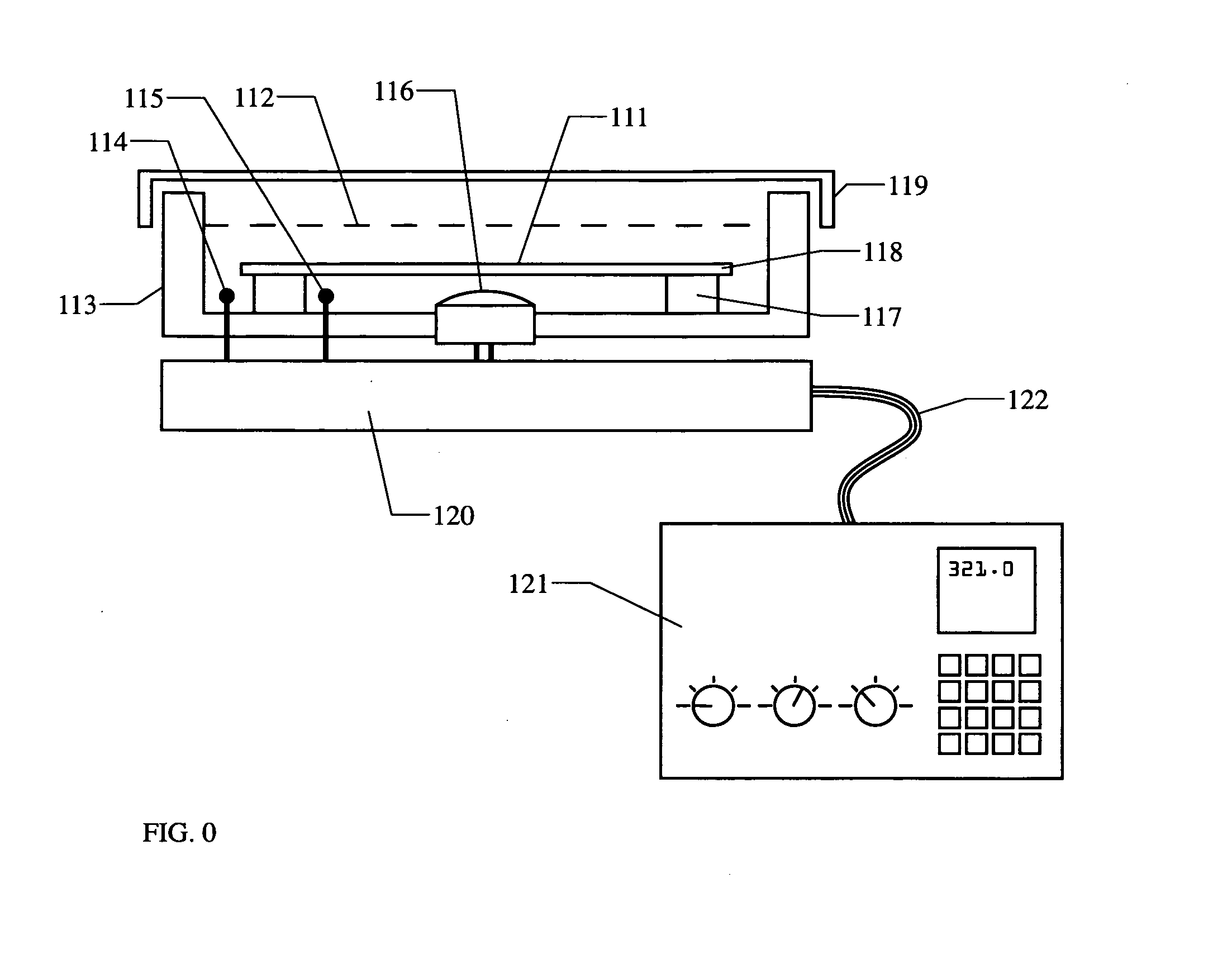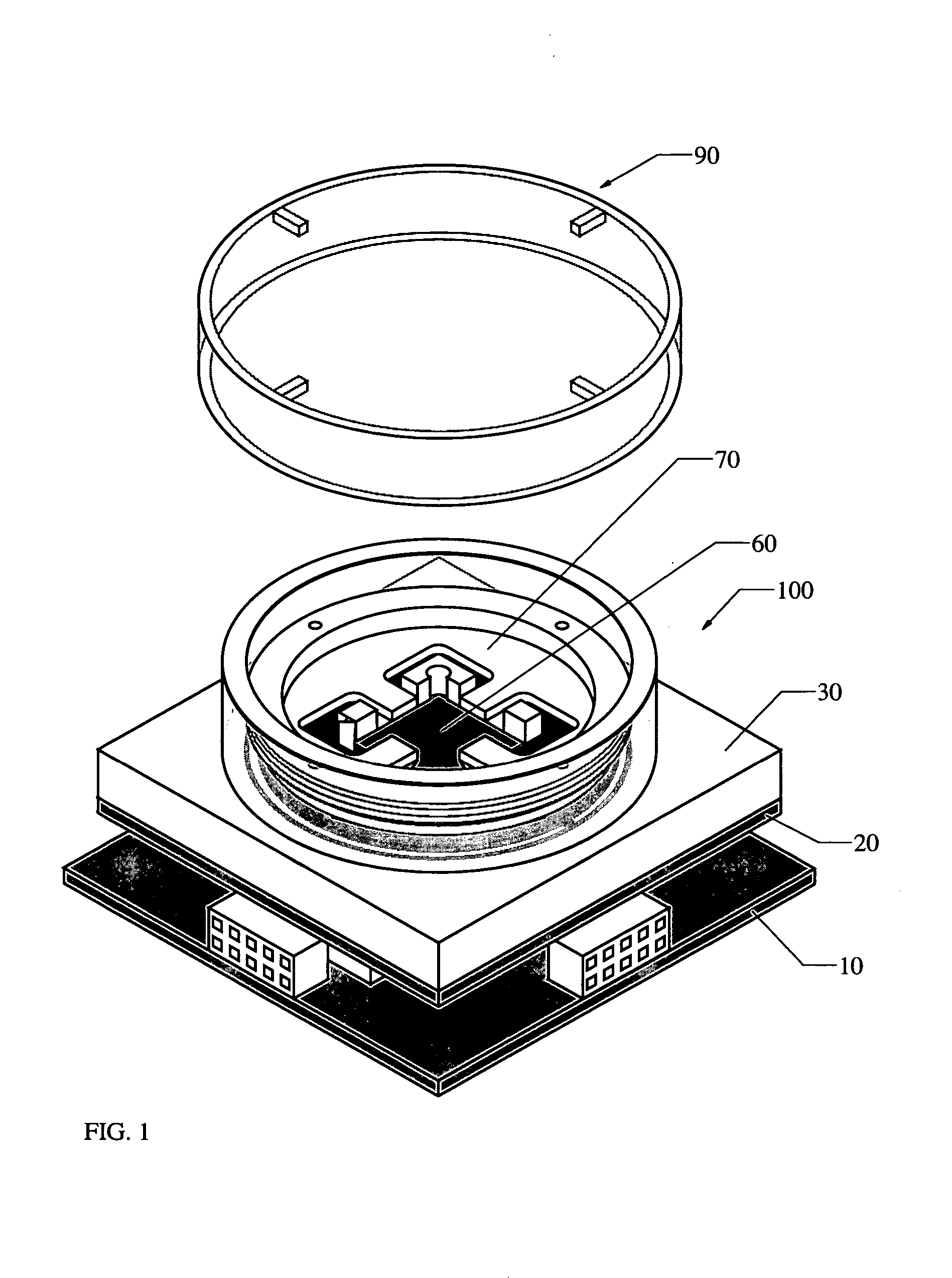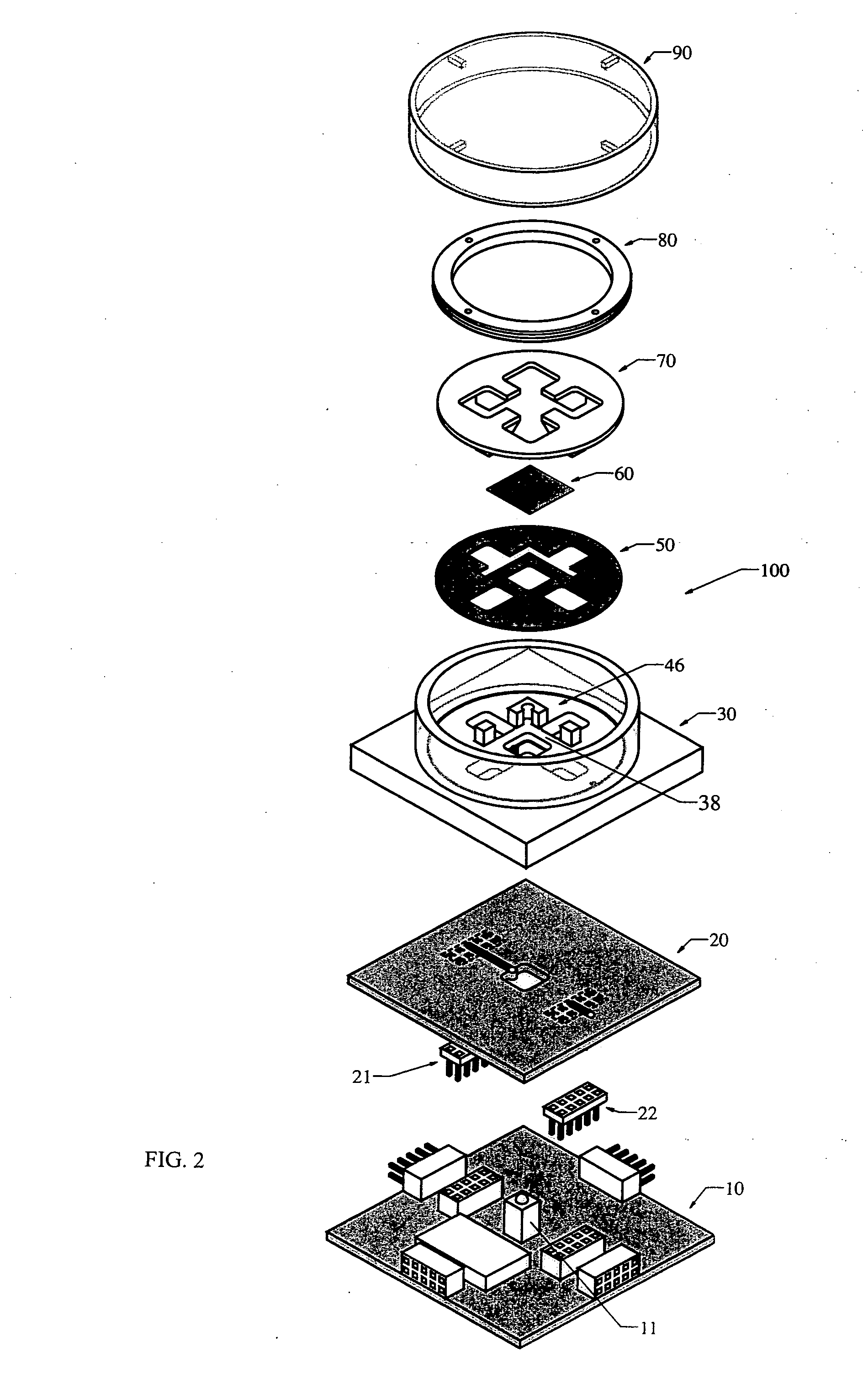Psychotropic drug screening device based on long-term photoconductive stimulation of neurons
a screening device and neuron technology, applied in the field of drug discovery and neuroscience, can solve the problems of not routinely used methods of studying long-term effects on neuronal networks, inability to generate appropriate experimental controls, and inability to generate appropriate comparisons, etc., to achieve rapid and cost-effective compound testing, and simulate activity
- Summary
- Abstract
- Description
- Claims
- Application Information
AI Technical Summary
Benefits of technology
Problems solved by technology
Method used
Image
Examples
example 1
Exemplary Assay Device
[0064] One embodiment of the long term stimulation device 100 is shown in perspective view in FIG. 1, with lid 90 removed. The device 100 is comprised of a number of subassemblies, which are shown in exploded view in FIG. 2, and in cross-section in FIG. 3.
[0065] Base unit 30 has a well 46 which houses the silicon die 60. Silicon die 60 is sandwiched between a silicone rubber gasket 50, underneath, and a pressure applicator 70 on top. For proper operation of photoconductive stimulation, the top and bottom surfaces of the silicon die 60 must be kept electrically isolated from each other once the die is placed into the base unit 30. To achieve this, a silicone rubber gasket 50 is placed between the surface 38 of the primary well 46 of the base unit 30 and the silicon die 60. The silicon die 60 is slightly oversized compared to the dimensions of an aperture 51 in the middle of gasket 50 (see also FIG. 8). This ensures that a portion of the gasket 50 will be prese...
example 2
Culturing Neurons
Reagents
[0081] The following reagents were used.
[0082] Cell culture: Standard procedures for preparing dissociated neuronal / glial co-cultures on glass slides can be followed until the point of plating. Rodent hippocampal neurons taken from newborn pups can be used routinely. The following solutions are used to produce high viability co-cultures of medium neuronal density (5×104 cells per chip).
[0083] Dissection solution: a solution was made up having the following composition: Hank's Balanced Salt Solution (10× stock, Gibco, Cat#14185-052) 100 ml; HEPES (Sigma, Cat# H-7523) 2.4 g; pH adjusted to 7.2 with NaOH (1N); topped up with water to 1,000 ml; osmolarity adjusted to 310 mOsm with Sorbitol (˜0.182 g / mOsm / l). The solution was filtered and sterilized into 2×500 ml bottles using a 0.2 μm filter, and stored at 4° C.
[0084] A growth medium is formed by mixing the following ingredients: BME (Basal Medium Eagle, Gibco, Cat#21010-046) 42.5 ml; D-Glucose 0.3 g; Glut...
PUM
| Property | Measurement | Unit |
|---|---|---|
| time | aaaaa | aaaaa |
| time | aaaaa | aaaaa |
| time | aaaaa | aaaaa |
Abstract
Description
Claims
Application Information
 Login to View More
Login to View More - R&D
- Intellectual Property
- Life Sciences
- Materials
- Tech Scout
- Unparalleled Data Quality
- Higher Quality Content
- 60% Fewer Hallucinations
Browse by: Latest US Patents, China's latest patents, Technical Efficacy Thesaurus, Application Domain, Technology Topic, Popular Technical Reports.
© 2025 PatSnap. All rights reserved.Legal|Privacy policy|Modern Slavery Act Transparency Statement|Sitemap|About US| Contact US: help@patsnap.com



